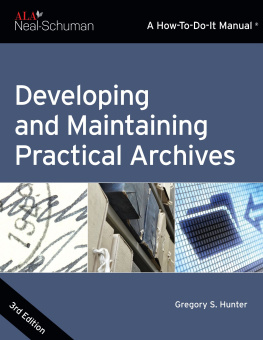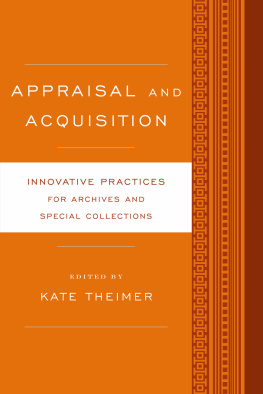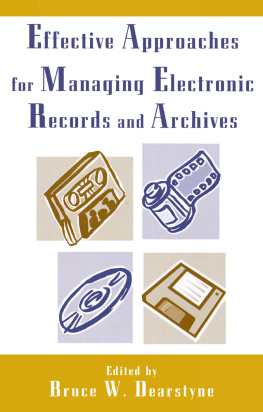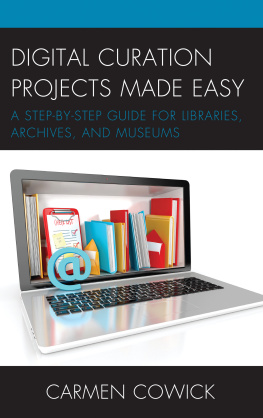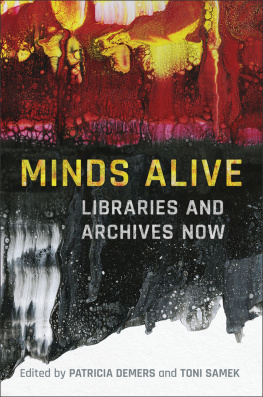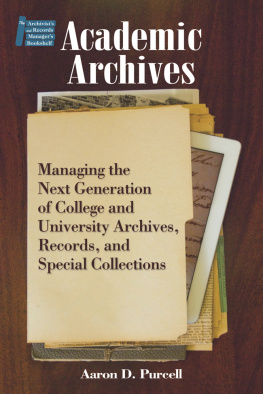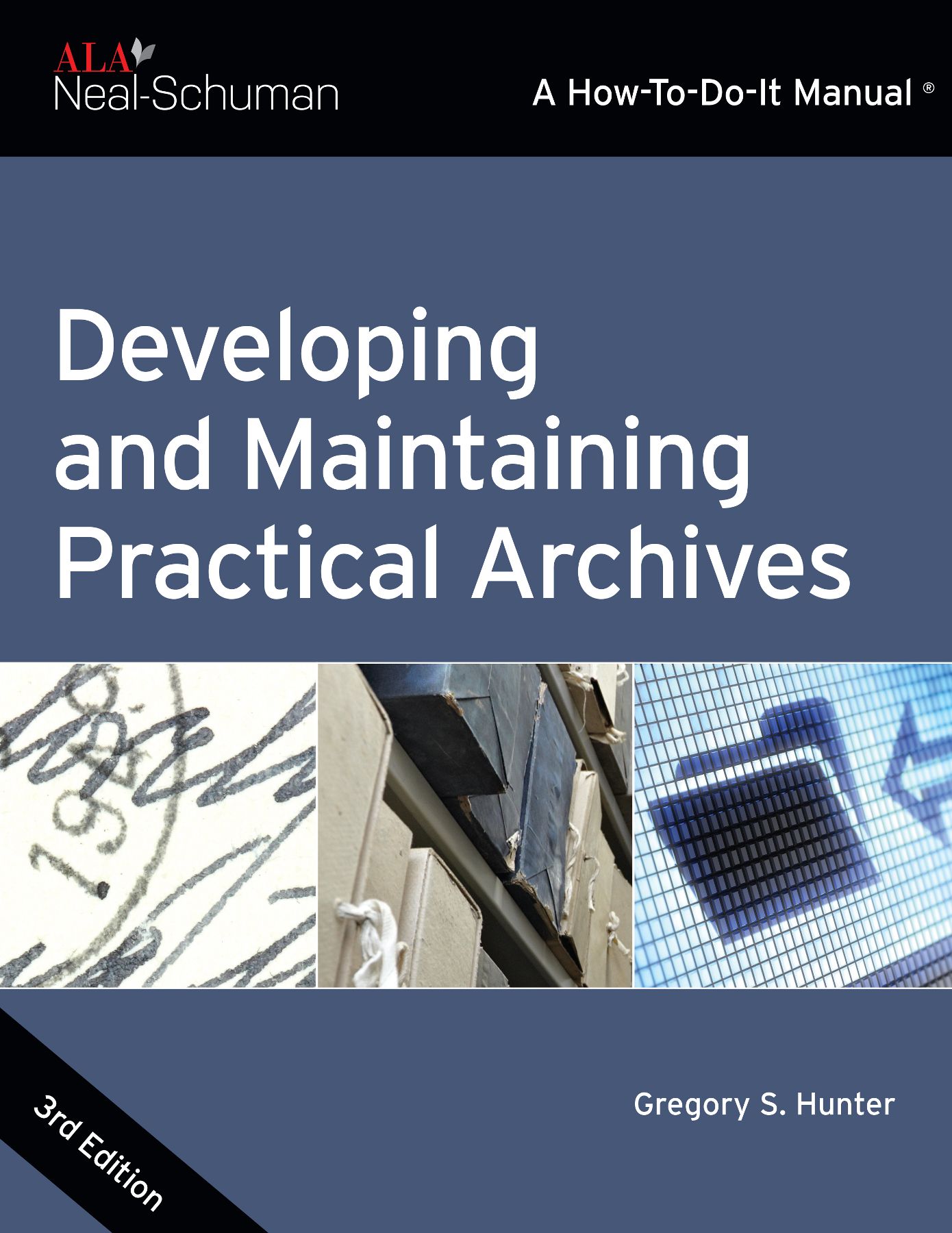
ALA Neal-Schuman purchases fund advocacy, awareness, and accreditation programs for library professionals worldwide.
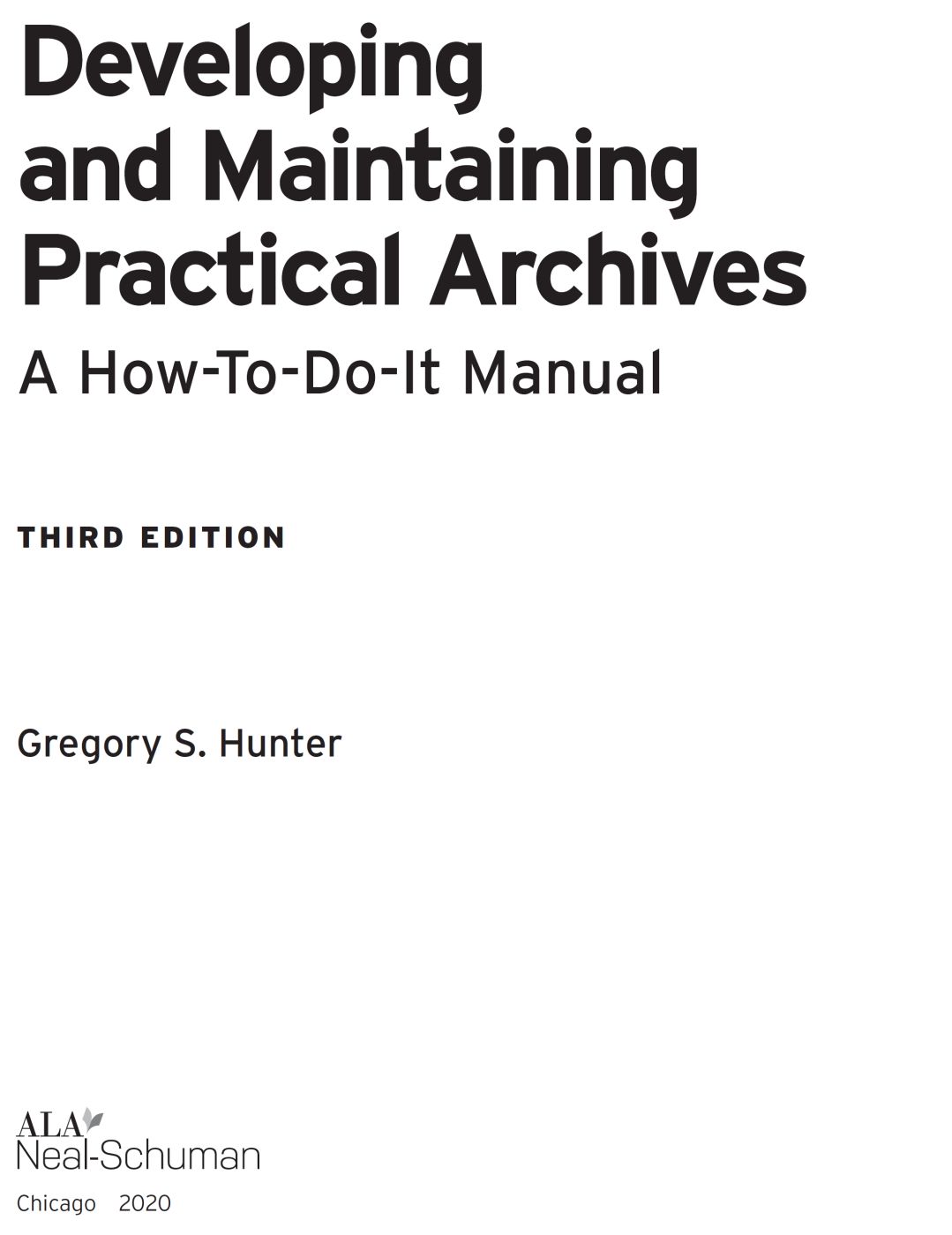
GREGORY S. HUNTER is a professor in the Palmer School of Library and Information Science, Long Island University, where he directs the Certificate of Advanced Study in Archives and Records Management. He holds a PhD and two masters degrees from New York University and a bachelors degree from St. Johns University in New York. Dr. Hunter is both a certified archivist and a certified records manager. He previously served as manager of corporate records for ITT Corporation and director of archival programs for the United Negro College Fund. From 20042009, Dr. Hunter served as principal archivist and records manager on a team headed by Lockheed Martin to build the Electronic Records Archives (ERA) for the National Archives and Records Administration; the team was awarded a $308 million contract in September 2005. Dr. Hunter is coinventor on four patents in the area of digital preservation submitted by the project team in the United States and the European Union. In 2017, Dr. Hunter completed a six-year term as editor of the American Archivist, the premier peer-reviewed journal in the field. Two of his books have received awards from the Society of American Archivists. In the past three years, Dr. Hunter has received $2.2 million in external funding to digitize materials in local historical societies and to make available Robert Mosess archival legacy on Long Island.
2020 by the American Library Association
Extensive effort has gone into ensuring the reliability of the information in this book; however, the publisher makes no warranty, express or implied, with respect to the material contained herein.
ISBNs
978-0-8389-1277-5 (paper)
978-0-8389-4728-9 (PDF)
978-0-8389-4727-2 (ePub)
978-0-8389-4729-6 (Kindle)
Library of Congress Cataloging-in-Publication Data
Names: Hunter, Gregory S., author.
Title: Developing and maintaining practical archives : a how-to-do-it manual / Gregory S. Hunter.
Description: Third edition | Chicago : American Library Association - ALA Neal-Schuman, [2020] | Series: A how-to-do-it manual | Includes . | Summary: Providing in-depth coverage of both theory and practice, this manual is essential for archivists at all levels of experience and of all backgroundsProvided by publisher.
Identifiers: LCCN 2019051458 (print) | LCCN 2019051459 (ebook) | ISBN 9780838912775 (paperback ; alk. paper) | ISBN 9780838947272 (epub) | ISBN 9780838947289 (pdf) | ISBN 9780838947296 (kindle edition)
Subjects: LCSH: ArchivesHandbooks, manuals, etc.
Classification: LCC CD950 .H86 2020 (print) | LCC CD950 (ebook) | DDC 025.17dc23
LC record available at https://lccn.loc.gov/2019051458
LC ebook record available at https://lccn.loc.gov/2019051459
Cover design by Alejandra Diaz. Images Shutterstock.
To my amazing grandchildren:
Stephen
Gregory
Samuel
Isabelle
Always remember where Noah kept the bees!
Contents
WELCOME TO THE LATEST STEP in a twenty-five-year professional and personal journey. In the mid-1990s, I was a young faculty member unable to find a one-volume summary of contemporary American archival theory and practice for classroom use. Only when I began writing the book did I realize the difficulty of the task and the reason others avoided it. The result in 1996 was the first edition of Developing and Maintaining Practical Archives.
The phrase Practical Archives always has had two meanings for me. First, it involves showing people today how much their lives depend on archives and the information they contain. This accounts for the books numerous real-life examples of the value of records. Second, managing archives can never be an abstract process. This has been brought home to me again and again in my teaching career. While professionals working with archives have a body of theory and methodology to guide them, it is the actual practice of the archival craft that enables society to benefit from the records preserved. I am always pleased when graduates tell me how the things we discussed made a difference in their working livesthat class was both theoretical and practical.
Seven years later, in 2003, I published the second edition of Developing and Maintaining Practical Archives. This book kept the original chapter outline but included expanded content to reflect the growth of and changes within the archival profession. I was pleased with the reception the book received and honored when the Society of American Archivists presented the second edition with the Waldo Gifford Leland Award for writing of superior excellence and usefulness in the field of archival history, theory, or practice.
My intention was to publish a third edition long before now. Let me apologize again to the colleagues who have been waiting patiently for years! Two major professional opportunitiessix years as part of the team that designed and built the Electronic Records Archives (ERA) for the National Archives and Records Administration and six years as editor of the American Archivistconsumed almost all of my nonteaching time. However, both of these experiences helped shape this third edition.
After my work on the ERA project, I no longer treat digital records as a separate problem covered in a chapter near the end of the book. Rather, I have integrated digital recordsas well as audiovisual recordsinto every chapter. This reflects the current practice in archives, which was the reason for writing this book in the first place. Every area of archival responsibilitysurveys and starting an archives, selection and appraisal, acquisition and accessioning, arrangement and description, preservation and security, reference and access, and outreach and advocacyhas been affected by digital records. In each chapter, I include the most recent theory and current best practices for both analog and digital records of all types and formats.
My time as editor of the American Archivist immersed me in the latest professional thinking around two key areas. The first, community archives, recognizes that professional archival institutions are not the answer to every preservation question. Some communities are choosing to maintain their own historical legacies rather than transferring records to an institution that may not reflect the communitys values and beliefs. The second area, the character of the archival profession itself, includes discussions of diversity, inclusion, and social justice. Therefore, this third edition features extensive sections on community archives and the archival profession.
I noted earlier that the three editions of Developing and Maintaining Practical Archives reflect a personal as well as a professional journey. My wife, Joann Heaney-Hunter, to whom I dedicated the first edition, has been with me even longer than this book. In 2019 we celebrated our fortieth wedding anniversary. I dedicated the second edition to our daughters, Beth and Kate, who now are professionals in their thirties and parents in their own right. I have dedicated the third edition to their childrenour grandchildrenStephen, Gregory, Samuel, and Isabelle. Should there be interest in a fourth edition, I promise to finish it before our grandchildren have children!
Finally, what is the significance of Noah and the bees in the dedication of the book? One day when Beth was young, she was very excited to share with me a joke she heard on
Next page
